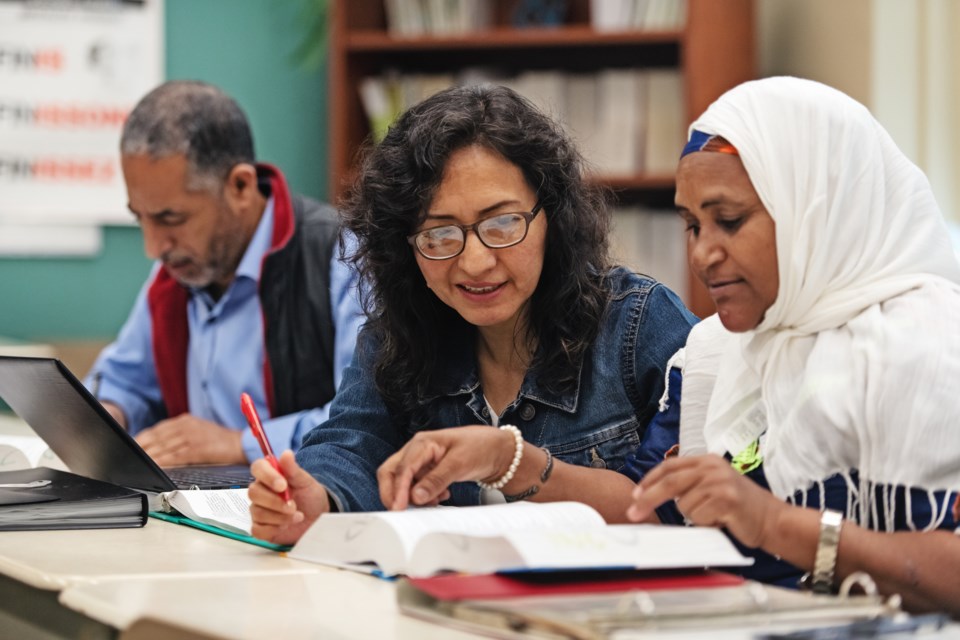According to the recent from the Saskatchewan Association of Immigrant Settlement and Integration Agencies, Settlement Workers in School (SWIS) said immigrant students also face who have made a false link between Asian newcomers and the virus.
“One of the Chinese kids was sitting in his classroom. One classmate was pointing at him like, ‘You’re the virus.’ But he was yelling, like, ‘I’m no virus. I didn’t get the virus. I’m healthy,’” recalled one of the participants in the study.
The 38-page report is the result of a qualitative study that investigated how the exacerbated educational inequities for young newcomers to Saskatchewan schools and how settlement workers responded. Academics from the University of Regina and the University of Victoria conducted eight focus groups with 30 settlement workers in schools across that province.
Established in Saskatoon in 2007, the SWIS program is a school-based outreach program designed to help newcomer students and families settle in their elementary and high schools. Currently, there are 12 SWIS programs in Saskatchewan and 60 staff serving approximately 2,400 students, according to the study.
Settlement workers who participated shared many examples of racism and discrimination in schools during the two years since the pandemic started.
“We do hear the comments…'Oh, it’s the newcomer that’s got the COVID-19 virus.’ So, they’re making that connection that it’s going to be spread by the newcomers…We’ve heard that, and our community was tagged with racist symbols over the summer,” said another participant.
Even though some participants expressed that trying to protect students from racism was difficult because they have experienced discriminatory treatment themselves, the study pointed out that the “lived knowledge as racialized immigrants and newcomers” of settlement workers helps better assist students.
“Their experiences with racism and other forms of discrimination also inform their work and relationships with students and their families,” the report states.
It also provides them with “insider knowledge and perspectives” about the unique experience of being a newcomer navigating a new country and school system during a pandemic.
Of the 30 participants in this study, 17 were racialized immigrants from East Asia, Â鶹ÊÓƵ Asia, Â鶹ÊÓƵeast Asia, Â鶹ÊÓƵ America, and the Middle East. Thirteen were either white immigrants from Europe or Canadian-born white settlers of European ancestry.
“The multilingual skills of several SWIS were crucial for disseminating and communicating key information related to the pandemic to students and their families,” the study states.
Technological barriers
The study also found that shifts to virtual learning have resulted in heavy reliance on technology, which has expanded the roles and responsibilities for many settlement workers into unofficial technological support workers.
“Newcomer families have come to rely on SWIS for support with the various technology platforms being used by schools for online learning on top of their regular job descriptions, and many SWIS are learning as they go alongside their clients,” the report states.
The report concludes that the role of settlement workers in schools is “critical to mitigating the long-term effects of the pandemic,” which could include increased experiences of school and “social disconnection and exclusion, gaps in learning opportunities, and mental health impacts.”
It highlights that at school, as in society more broadly, the impacts of the pandemic are most deeply felt within marginalized communities, including for newcomer students, who were already at a disadvantage pre-pandemic.
Similar experiences
Even though the study’s authors underline that “as a qualitative study with 30 participants, this research does not represent SWIS as a whole, and the results are not meant to be generalized to a larger population,” the findings were familiar to Ontario education advocates.
Matias de Dovitiis, a former Toronto District School Board (TDSB) candidate for trustee at the Humber River-Black Creek area, agreed the pandemic has exacerbated bullying in schools.
“In my district, there is a significant number of Vietnamese immigrants, and I know of cases of students who have suffered bullying when they have been pointed out as responsible for the pandemic,” he said.
He is also the founder and president of “CONOSER,” a charitable organization that provides educational services for LatinX students in the Greater Toronto Area (GTA). He said digital bullying can be more aggressive because the students who do it feel more protected behind the screen than out in the open at school.
“With the cuts to school programs, SWIS services are very important to help newcomer students,” de Dovitiis said.
‘Cultural bridge’
Monique Forster has taught elementary students for 15 years and has been a Catholic School Trustee with the Durham Catholic District School Board for the past eight. For her, the work of settlement workers in schools is “an essential resource in the integration of newcomer families and students.”
“Settlement workers create a cultural bridge between the Canadian education system and the newcomer students and their families,” explained Forster, adding that “the settlement worker’s job is to create a connection between newly arrived families, who often do not speak the language and are not familiar with the Canadian culture or the education system in Canada, and essential resources available.”
Forster says the engagement and integration of newcomers into the Canadian educational system is “essential” to combat “staggering high school dropout rates, particularly among low income, immigrant communities, such as the Spanish-speaking community.”
A Statistics Canada report based on census 2016 data states that just 38.1 per cent of students 15 to 19 years old completed high school that same year.
Participants of the SWIS study were recruited through the Saskatchewan SWIS Coordination (SSC) program, which is a partnership between Saskatchewan SWIS providers and Immigration, Refugees and Citizenship Canada (IRCC).
One of the study’s recommendations to the IRCC is to offer permanent positions for settlement workers in schools.
The study concludes that settlement workers perform “a unique form of settlement work” because SWIS engages with young people in a limited time of school where students form “identities that they carry into adulthood… (thus) the SWIS support has future implications and impacts.”




